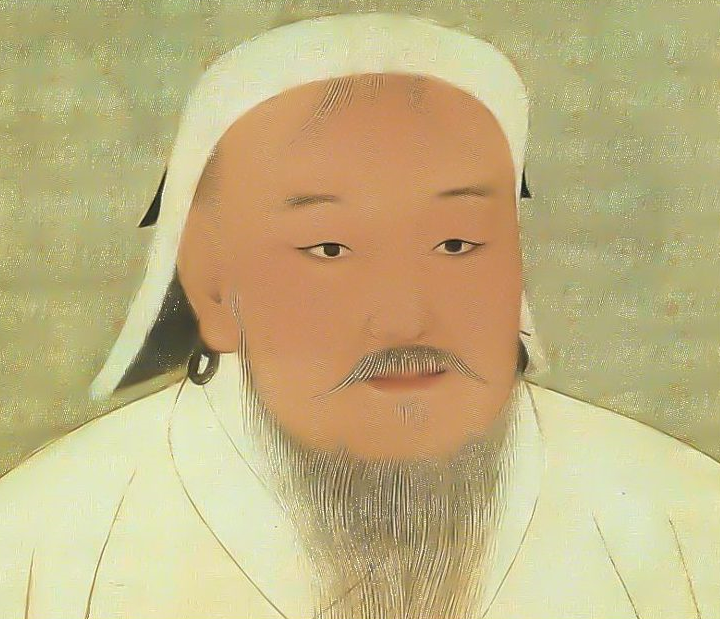Genghis Khan's Biography

Genghis Khan (1162 – 1227) was a powerful man who ruled Mongolia for 21 years (1206 – 1227).
When he was a young boy, he liked to ride horses and hunt with his brothers. His original name was Temujin which meant “finest steel”. His father was the Khan of his tribe and was going to pass down his throne to Temujin.
When the boy was about nine years old, he was sent away to live with the tribe of his future wife, Borte. After a few years, his father was poisoned by the Tartars, and the now grown up Temujin went back home to claim his throne.
Upon arriving home, he discovered that his household had been betrayed and that another man had claimed to be khan. Temujin took care of his family and managed to help them survive a harsh winter while plotting his revenge on the Tartars.
He got married to Borte and made an alliance with her clan. He led them into battle and gained a reputation for being a harsh and merciless warrior and commander. His army grew until he had a force that was large enough to fight the Tartars.
After amassing an army, the ruthless man attacked the Tartars and came out victoriously. He united all the Mongol tribes under his authority and gained the named Genghis Khan (ruler of all) among the tribes.
The ruler of the Mongols was a superb general and invented ways of sending messages and commands through smoke signals, flags, and drums. He even invented a tactic of sending in a small force, luring in his enemies and then ambushing them.
Genghis Khan was a powerful leader who was cruel and murderous to his enemies, but kind and loyal to those who were his allies. He would promote soldiers based on their performance, and he would not allow his sons to be leaders unless they proved themselves capable of the task.
Genghis Khan did not stop with becoming the ruler of Mongolia, but he invaded the Northern part of China and destroyed the Muslim Kwarizmian Empire because both of these peoples had mistreated Mongolians.
The Khan's Conquests
When Genghis Khan was going to conquer China, he and his army scaled the Great Wall to attack in 1213. They then took cities by force or by siege and slowly conquered the whole of north China and gained control of it in 1215.
In 1218, when Genghis tried to establish trade with the Muslims of the Kwarizmian Empire, they killed his embassy, so he, in return, attacked and killed many of their people and conquered their empire by 1220.
After taking north China and the Kwarizmian Empire, the Khan raided through Afghanistan and India, plundering and taking land for his empire. The warlord ended up adding Transoxiana and Persia to his vast domain. At the Battle of Kalka River in 1223 he destroyed the prince of Kyiv and his armies.
Genghis returned to China in 1227 and died. No one knows for sure how he passed away, but it is speculated he was put down by an injury from falling off his horse.
The End of the Khan's Life
Near the death of the khan (1227), the Jin of China tried to revolt but were stopped by the 180,000 troops that Genghis Khan had sent to stop the rebellion. He decided that he would split his empire into four parts and give one part to each of his sons, who he had taught how to select future Khans. When he died and was buried, the people who buried him hid his grave and until now, it is still not found; some even say that the course of a river was changed to flow over the grave so that no one could find it. The empire thrived and was its biggest under the ruler Kublai Khan, who expanded Genghis' empire by 35 million square kilometers.




